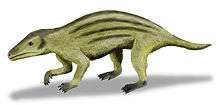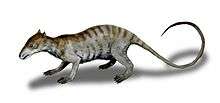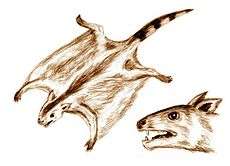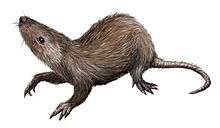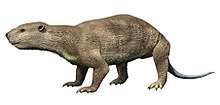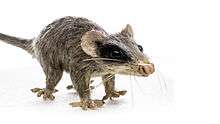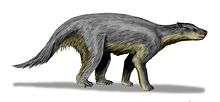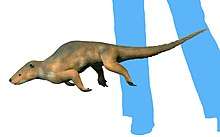Chronoperates
Chronoperates (meaning "time wanderer" in Greek) is an extinct genus of mammal whose remains have been found in a late Paleocene deposit in Alberta, Canada. It is represented by the type species Chronoperates paradoxus and known only from a partial left lower jaw.[1] It was first identified in 1992 as a non-mammalian cynodont, implying a ghost lineage of over 100 million years since the previously youngest known record of non-mammalian cynodonts, which at that time was in the Jurassic period (some non-mammalian cynodonts are now known to have persisted until the Early Cretaceous). Subsequent authors have challenged the cynodont interpretation, particularly as the teeth do not resemble any known cynodonts. Chronoperates is now generally considered to be more likely to be a late-surviving symmetrodont mammal. This would still infer a ghost lineage for symmetrodonts, but a more plausible one, as symmetrodonts persisted into the Late Cretaceous.
| Chronoperates | |
|---|---|
| Scientific classification | |
| Kingdom: | Animalia |
| Phylum: | Chordata |
| Class: | Mammalia |
| Clade: | Holotheria |
| Family: | †Chronoperatidae Fox, Youzwyshyn & Krause, 1992 |
| Genus: | †Chronoperates Fox, Youzwyshyn & Krause, 1992 |
| Type species | |
| †Chronoperates paradoxus Fox, Youzwyshyn & Krause, 1992 | |
References
- Fox, Richard C.; Youzwyshyn, Gordon P.; Krause, David W. (1992). "Post-Jurassic mammal-like reptile from the Palaeocene". Nature. 358 (6383): 233–235. doi:10.1038/358233a0. PMID 1630490.
http://darrennaish.blogspot.com/2006/05/time-wandering-cynodonts-and-docodonts.html

